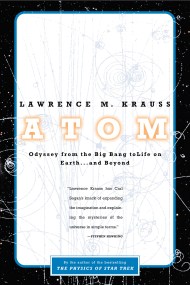Promotion
Use code BESTBOOKS24 for 25% off sitewide + free shipping over $35
By clicking “Accept,” you agree to the use of cookies and similar technologies on your device as set forth in our Cookie Policy and our Privacy Policy. Please note that certain cookies are essential for this website to function properly and do not require user consent to be deployed.
Pillars of Creation
How the James Webb Telescope Unlocked the Secrets of the Cosmos
Contributors
Formats and Prices
Price
$14.99Price
$19.99 CADFormat
Format:
- ebook $14.99 $19.99 CAD
- Hardcover $29.00 $38.00 CAD
- Audiobook Download (Unabridged) $18.99
This item is a preorder. Your payment method will be charged immediately, and the product is expected to ship on or around October 22, 2024. This date is subject to change due to shipping delays beyond our control.
Also available from:
Pillars of Creation tells the story of one of the greatest scientific achievements in the history of civilization, a $10 billion instrument with a staggeringly ambitious goal: unlocking the secrets of the cosmos. Award-winning science writer Richard Panek stands us shoulder to shoulder with senior scientists as they conceive the mission, meet decades-long challenges to bring it to fruition, and, now, use its unprecedented technology to yield new discoveries about the origins of our solar system, to search for life on planets around other suns, and to trace the growth of hundreds of billions of galaxies all the way back to the birth of the first stars. The Webb telescope has captured the world’s imagination, and Pillars of Creation shows how and why—including through sixteen pages of awe-inspiring, full-color photos.
At once a testament to human ingenuity and a celebration of mankind’s biggest leap yet into the cosmos, Panek’s eye-opening book reveals our universe as we’ve never seen it before—through the lens of the James Webb Space Telescope, a marvel that is itself a pillar of creation.
Genre:
-
“[An] accessible account of how the Webb telescope has revolutionized the field of astronomy…. Panek tells the story with infectious enthusiasm… An essential read for anyone interested in the new frontiers of science, written with clarity and authority.”Kirkus Reviews (starred review)
-
“In this stellar account, science writer Panek…offers a wondrous overview of Webb’s major breakthroughs… Brimming with the excitement of scientific discovery, this soars.”Publishers Weekly (starred review)
-
“An engaging tale of ideas clashing with reality that places the reader inside the rooms where the telescope was born… [Panek’s] journalistic training is apparent, in smooth sentences, seamless storytelling, and a knack for conveying just enough scientific detail to keep the reader educated and motivated to continue.”Science Magazine
-
"Richard Panek lays out the brave new world of the just-dawned Webb era and how the instrument is already opening fresh astronomical and cosmological vistas....Panek’s style is brisk, breezy, and rather lighthearted....He uses novelistic touches to tell the story—snippets of dialogue here or a participant’s ostensible thoughts there—gleaned from his interviews with the key players, which give the book a humanistic feel instead of a dry historical stuffiness."Undark
- On Sale
- Oct 22, 2024
- Page Count
- 256 pages
- Publisher
- Little, Brown and Company
- ISBN-13
- 9780316570718
Newsletter Signup
By clicking ‘Sign Up,’ I acknowledge that I have read and agree to Hachette Book Group’s Privacy Policy and Terms of Use







